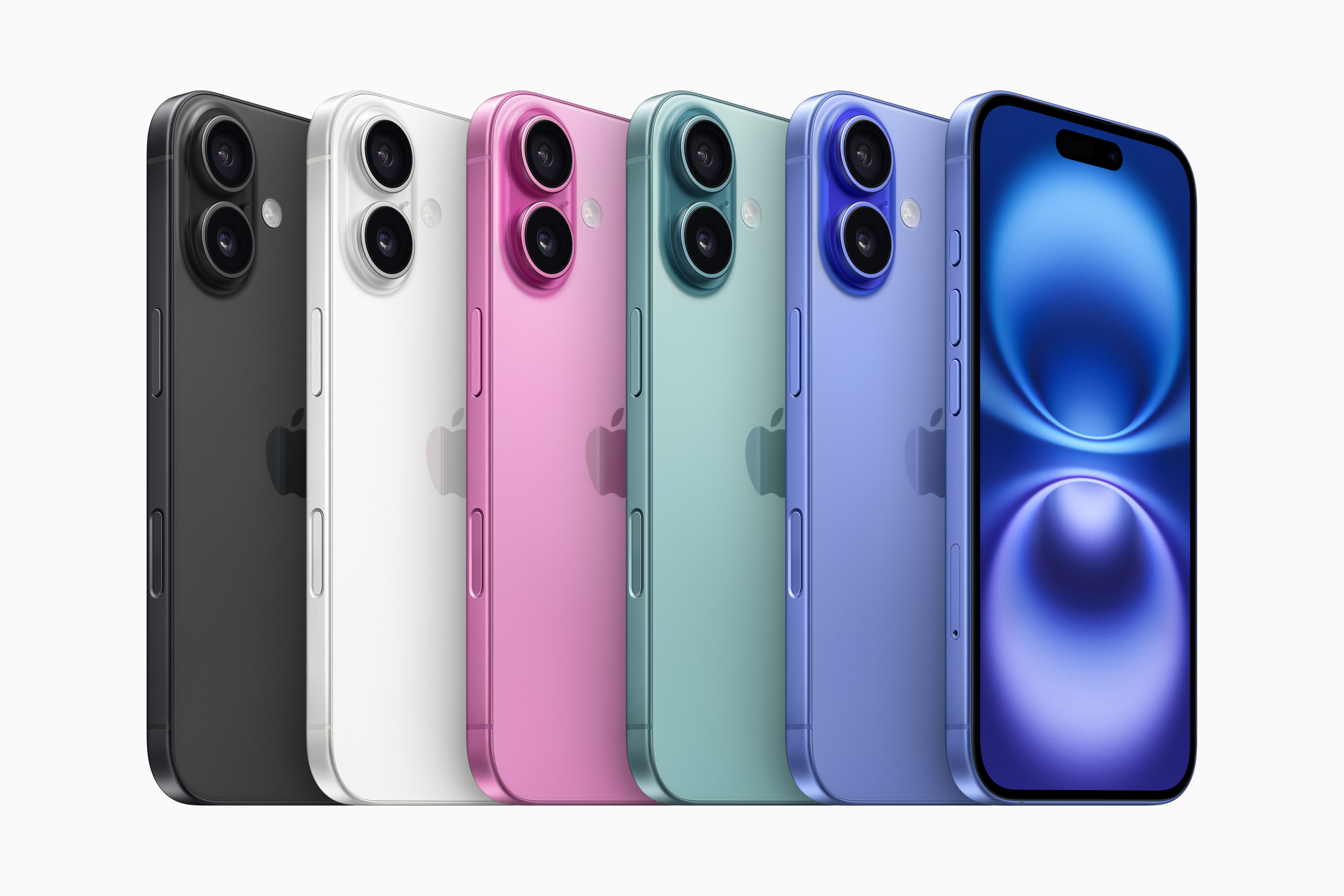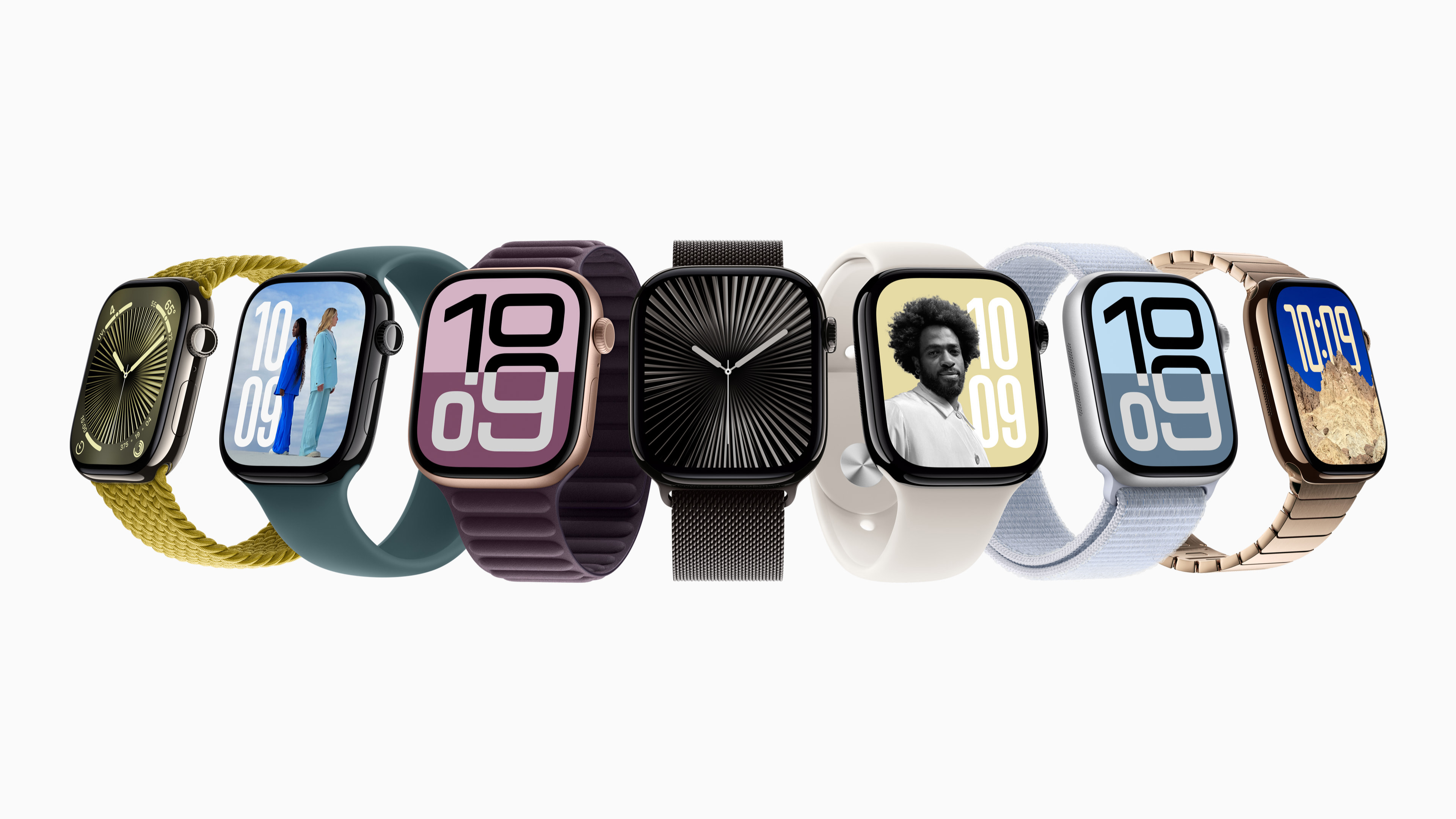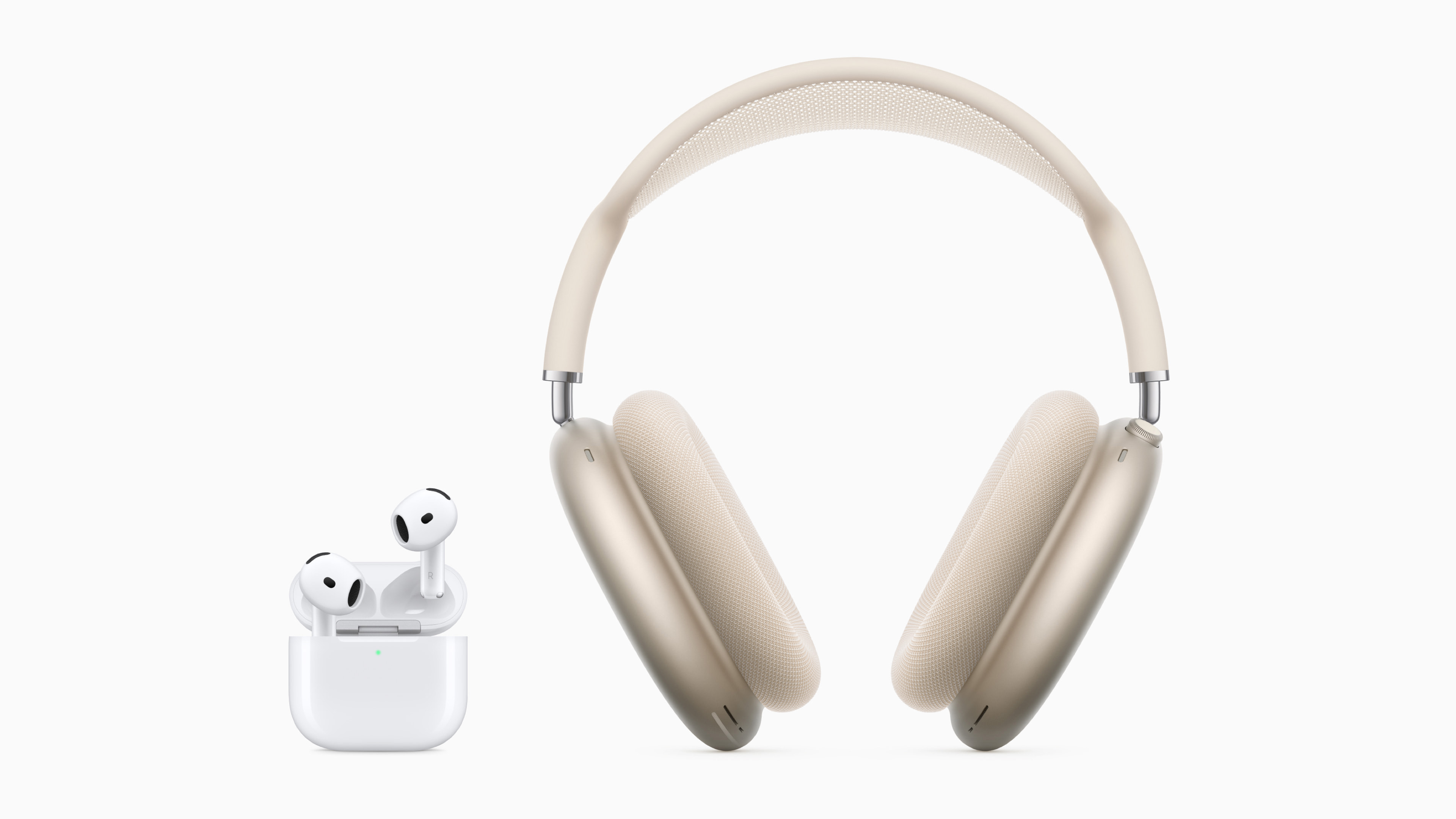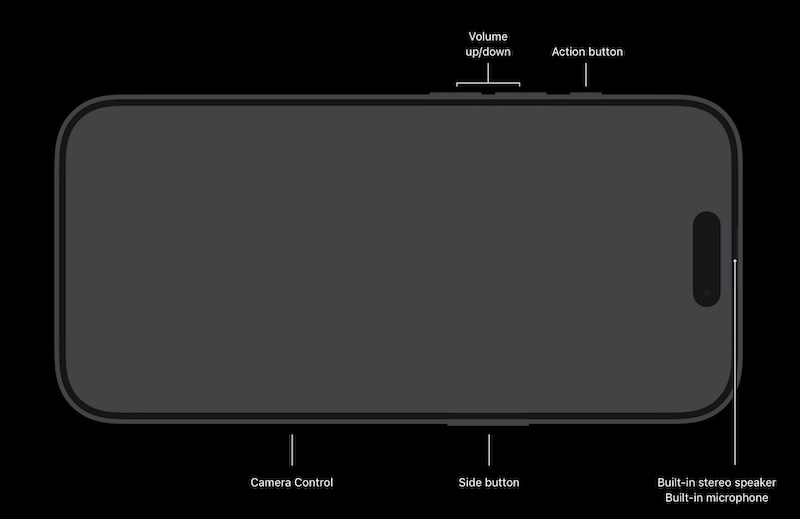
Today's Apple "Glowtime" event saw the company release the iPhone 16 range of smartphones, which will incorporate artificial intelligence features - eventually, as the United States will get them first in October, with New Zealand scheduled to receive them in December.
As always, there's a huge bundle of tech specs and numbers to go with the new iPhones.
Screens are OLED, and over 6 inches diagonally across the iPhone 16 range. The lower-end 16 model has 6.1 and 6.7-inch displays with 2000 nits brightness, the Dynamic Island for the front camera area, and Ceramic Shield glass. They are wide colour Super Retina XDR displays with 2556 by 1179 and 2796 by 1290 pixel resolution, respectively. This works out as 460 pixels per inch (ppi).
The iPhone 16 Pro and Pro Max displays are bigger, at 6.3 inch and 6.9 inch diagonally respectively. They are also 460 ppi and have 2622 by 1206 and 2868 by 1320 resolution respectively, up to 120 Hz adaptive ProMotion refresh rates.
For the case, the biggest change is a new multi-function Camera Control button. This has haptic feedback, and can do half presses for focus selection and full presses to take pictures and video, along with sensing finger sliding across the button to do things like changing the aperture setting and zoom level.
The cases are IP68 rated and should survive up to six metre water depth for 30 minutes, Apple said. Said cases are made out of aluminium (recycled) with glass backs in black, pink, teal and ultramarine colours.
For the Pro models, the cases are made out of recycled titanium, that's treated and polished in four finishes: desert, natural, white and black.

Inside, Apple has designed the new iPhones with the A18 chipset that's made with a very fine, 3 nanometre process. As you'd expect, the A18 promises speed increases over the previous generation of silicon while consuming less energy. I hope to have more on this when review units arrive but the iPhone 16 Pro Max is rated at 33 hours, or four more hours of battery life than its predecessor.
Apple hasn't gone core-crazy with the A18: the main processor has six cores (two performance, four efficiency ones), and a five-core graphics unit like the A17. For AI, there's a new 16-core Neural Engine with 35 trillion operations per second, improved memory bandwidth and machine learning accelerators.
The iPhone Pros have the uprated A18 Pro that adds another graphics core, and memory is 8 gigabytes just like before.
How much do the new iPhones cost?
Quite a bit, as with any premium smartphone these days. Pricing including GST:
| Model and storage | 128 GB | 256 GB | 512 GB | 1 TB |
| 6.1" iPhone 16 | $1599 | $1799 | $2199 | N/A |
| 6.7" iPhone 16 Plus | $1799 | $1999 | $2399 | N/A |
| 6.3" iPhone 16 Pro | $1999 | $2199 | $2599 | $2999 |
| 6.7" iPhone 16 Pro Max | N/A | $2399 | $2799 | $3199 |
Cameras are Fusion now
New iPhones have to have improved cameras as well. The two-system imager in the iPhone 16 is called Fusion and the 48 megapixel unit provides what Apple says is four lenses for the device.
Focal length is 26 mm (35 mm film camera equivalent, an almost bygone era metric that's still with us) and f/1.6 aperture, optical image stabilisation, 100 per cent Focus Pixels and 24 and 48 MP sized pictures. It also crops in for 12 MP 52 mm telephotos that are stabilised and with autofocus as well and that's the Fusion thing.
The sensor vendor isn't specified, but chances are fairly high it's made by Sony.
A 13 mm ultra-wide camera is also built into the iPhone 16s, with 12 MP and f/2.2 aperture. This gives you a 120-degree field of view and macro mode.
Video can be recorded at up to 4k resolution with Dolby Vision, and frame rates of 24, 25, 30 and 60 per second. There's a cinematic 4k 30 fps high dynamic range mode, and an action mode with 60 fps and 2.8k resolution that's stabilised.
Slow-motion video is the same 120 and 240 fps at 1080p as in last year's model.
The three camera Fusion system in the iPhone Pros is a bit different: the main 48 MP camera has 24 mm focal length, and f/1.78 aperture. This can do the 12 MP 52 mm 2x telephoto thing too, but with f/1.6 aperture.
For up to optical 5x telephoto shooting on the Pros, there's an advanced 12 MP unit with 120 mm focal length and f/2.8 aperture. This uses a folded tetraprism design to fit into the phones, is 3D sensor shift optically stabilised with autofocus and has seven lens elements.
And, the LiDAR Scanner for night mode portraits has been carried over.
On the Pro video side of things, the big news is 100 and 120 fps Fusion frame rates; audio recording, always important for video, is now courtesy of four "studio quality" microphones, wind noise reduction and a very interesting looking audio mixing feature.
Not forgetting the selfie cameras, these are 12 MP units that come with f/1.9 aperture, Focus Pixels, Deep Fusion, up to 4k 60 fps video and even the movie industry Academic Colour Encoding System (ACES) plus the usual large range of features.
New Series 10 Watch
Apple is big on customers using their devices for health monitoring, and dropped a new Series 10 Watch that's slimmer and with the S10 SiP chipset, there's now sleep apnoea notifications added to heart rate, ECG, respiratory rate, blood oxygen level, wrist temp, sleep tracking and general monitoring of your ticker for bad things like atrial fibrillation.

The Series 10 Watch starts at $749 including GST for GPS only; adding cellular for Watch independence from your iPhone ups that to $949. The fitness oriented Apple Watch Ultra 2 gets a new black titanium finish; it has most of the above health monitoring functions and even more sports functions accessed via the Action button. It has a low-temperature polycrystalline oxide OLED display with up to 3000 nits brightness. Interestingly, the display in the Ultra Watch 2 is LTPO2 but the 2000 nits one in the Watch Series 10 is LTPO3, but this is wide-angle and brighter when viewed obliquely.

AirPods 4 with and without noise cancellation and Pro 2s get hearing health updates
The health theme isn't carried over in the new AirPods 4 with the H2 chip ($249, or $349 with active noise cancellation) but the AirPods Pro 2 will get both loud sound reduction capabilities and a US medical authorities approved hearing test.
Not only that, the AirPods Pro 2 can be used as hearing aids for mild to moderate hearing loss. The features will arrive through a software update later this year. If it works, $479 for the AirPods Pro 2 seems like a bargain for hearing health.
Apple's over-ear cans, the AirPods Max, have also received an overhaul and cost $999.
Spatial Audio is supported by the AirPods and all the gear in the piece will be available from September 20.
Finally, the Apple Intelligence features are not yet released to the general public. Developers can check them out but it requires setting region and language to the US, and the technology will only work on newer Apple devices.
Apple mentioned the ChatGPT integration for some features, a smarter Siri, and the tech giant's usual focus on privacy above all, with no data being shared with anyone - not even Apple - in case more processing power in the cloud is required. More to come on AI in a few months, but Apple is betting big on the technology, just like other vendors.
Foldable iPhones? Not this time around, and maybe not even until 2026.
Update The story was written very early in the morning, but that's not excuse for missing the obvious "AiPhones" gag. My apologies.
15 Comments
Still can't fathom why the major droids and the Apple premium phones come in the blandest, least interesting colours compared to their standard range counterparts.
At least Samsung brings some of their exclusive colours through their online store here, but if I were looking at an iPhone I'd be annoyed that the most interest colours aren't options for the premium devices.
You can buy this https://www.jbhifi.com.au/products/hmd-barbie-phone-4g-pink
Bit of a snooze fest really……..
For the case, the biggest change is a new multi-function Camera Control button. This has haptic feedback, and can do half presses for focus selection and full presses to take pictures and video, along with sensing finger sliding across the button to do things like changing the aperture setting and zoom level.
Is it a physical button or just a feature of the touch screen? If the latter, then I predict they will make more money form replacement screens that they will on the phones themselves XD
AirPods Pro 2 will get both loud sound reduction capabilities and a US medical authorities approved hearing test. Not only that, the AirPods Pro 2 can be used as hearing aids for mild to moderate hearing loss. The feature will arrive through a software update next year and if it works, $479 for the AirPods Pro 2 seems like a bargain for hearing health.
Pricey, but it will be infinitely useful for picking up hearing loss earlier which can have positive downstream effects such as lowering the risk of dementia
Is it a physical button or just a feature of the touch screen? If the latter, then I predict they will make more money form replacement screens that they will on the phones themselves XD
It's a physical button, similar to the shutter release on DSLRs:

There doesn't seem to be much innovation in this consumer tech space recently. What's holding the killer new features back?
You'd think by now we'd have features like laser distance finders and thermal imaging would have permeated further given their manifold uses to corporate clients.
LiDAR would do that, although I'd have to check to see if the sensor in the new iPhones has been upgraded as the first generation one doesn't go that far. Thermal imaging would be cool, or hot, but also quite esoteric and probably eat battery.
It's official. New phones cost more than second hand cars, new dishwashers and fridges. And people don't even like using them to call people.
Unless it is a work tool, I can't see the need for spending so much. There's a ton of second hand Iphones for sale from people who feel the need to upgrade and one only needs so good a camera before it becomes meaningless.
Likewise it’s hard to justify what many people spend on cars when a second hand one is fine. Some people just want to have the best I guess, if you’ve got the money then why not.
Title should read, Apple spent the last year unable to innovate (meaningfully).
In other news, the iPhone 11 is still supported until 2026.
iPhone 11
Mine just won't die. Battery on 76% health but easily lasts all day.
IMO unless you need a really good phone camera, older cheaper model are fine. I got an iphone SE2 a few years ago 2nd hand for $350, and apparently it may be supported for a few more years with ios updates. That is pretty good value. The problem though is the batteries are super expensive to replace with official apple batteries, compared to the buy price.
Just installed iOS 18 on my old iphone SE2 and with the new features and appearance of the OS with the new dark and larger icons, it is like getting a new updated phone. You don't tend to get that with Android, and they stop supporting the OS after only a few years, unlike Apple. My Samsung Note only got 2 years of updates. That is where iphones rock.
As someone who has a habit of destroying phones, and therefore buys ruggedised Android handsets from Chinese makers like Unihertz that cost a fraction of the Apple asking price, I really just don't get why people pay for flagship phones when it really is just a communications device.
I might make an exception for a Pixel, upon which I can install Graphene to de-Google it.

We welcome your comments below. If you are not already registered, please register to comment.
Remember we welcome robust, respectful and insightful debate. We don't welcome abusive or defamatory comments and will de-register those repeatedly making such comments. Our current comment policy is here.